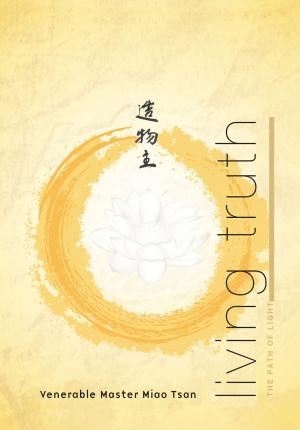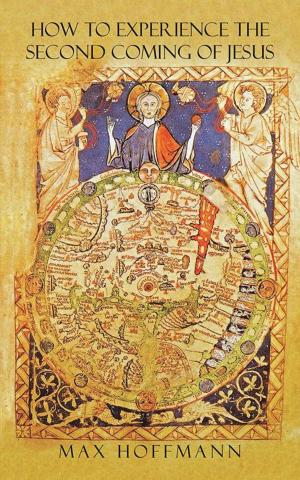Some Moments With the Master
Spiritual Dialogues with the Sufi Saint
Nonfiction, Religion & Spirituality, Inspiration & Meditation, Spirituality| Author: | Dr. R.M. Hari | ISBN: | 9780985098810 |
| Publisher: | H. M. Damodar | Publication: | July 31, 2012 |
| Imprint: | Language: | English |
| Author: | Dr. R.M. Hari |
| ISBN: | 9780985098810 |
| Publisher: | H. M. Damodar |
| Publication: | July 31, 2012 |
| Imprint: | |
| Language: | English |
Divine beings have come to this earth, from time to time, to enlighten man and guide him in the right direction, to teach him what Divine Love or Ishq Haqiqi means and how it can be attained and sustained, and to explain to him the very purpose of life. One such divine being was Sai Rochaldas Sahib, a brilliant star in the galaxy of Sufi saints of Sind. He was unique and his life was an example of perfection. He was a perfect disciple, perfect householder, perfect lover, perfect yogi and perfect Master. Following the spiritual path under the guidance of his perfect satguru, Sai Hazrat Qutab Ali Shah Sahib, he realised the Truth and attained to Oneness. He personified divine love—Ishq Haqiqi. As a disciple, he had absolute faith in his satguru, he showed complete obedience to the precept, zeal and earnestness in practice and steadfastness and firmness in endeavour. He was pure in his mind and his spiritual endeavours were without any ulterior motive. As a householder, he was dutiful, loving, gentle, humble, contended, hospitable, generous, simple, compassionate and fond of beauty, discipline and orderliness. He had fully resigned himself to the will of God. He always wore a simple dress and never put on the garb of a monk or a priest. His dwelling place was very simple. It did not have the semblance of a temple or a shrine. As a lover, he had attained total absorption (fanai) in his satguru, in the deity and in the gurushabd, culminating in the annihilation of the self and realisation of the Self or the Truth. As a yogi, he was adept in pranayama but he never displayed his attainments and powers and refrained from using the occult powers that usually come to a seeker with the practice of pranayama. Going beyond the realm of occult which he treated as an aspect of maya—the cosmic illusion—he delved deep into the domain of spiritualism. He attained union with the Absolute, Haq or Brahm. As a Master, he was a Brahmgyani, fully competent to lead and guide a seeker on the spiritual path and he helped many a seeker. His life teaches us how one can live as an ordinary person among men even after having attained the supreme divine state—the state of turiya-atit or baqa-ba-Allah. His life also teaches us that for realising the Self it is not enough for one to merely undertake japa or to recite the name of God. One must also adopt the right way of life or conduct. He used to say, “What is the use of a talk if one does not follow the right mode of living or conduct!” Some of us had the privilege to have spent some time with him. Now when we look back, we realise how blessed were those moments that we had spent in his presence. For many years he had maintained himself in strict silence. It was towards the end of his life that he entered into conversation openly. His utterances were highly significant and of deep meaning. He was very sweet and loving in his speech. His method of guidance was always informal. He did not speak like a scholar, or an erudite or a pundit. Since he had himself practised and realised what he wanted to convey, his utterances were practical and spontaneous and not merely academic. At no stage did he expound an idea through a discourse or a lecture. It is not that he was incapable of doing so. But those who are ever absorbed in the Almighty do not do it; they are not bound by the laws of the mundane world. They act spontaneously under a divine impulse or as the Lord makes them act at a particular moment. He was omniscient; and he spoke in such a manner that the doubts of the seekers were removed without their having raised the doubts openly before him. Fortunately, some dedicated disciples of his took down notes of the dialogues on some occasions. The Master left his mortal frame in December, 1957.
Divine beings have come to this earth, from time to time, to enlighten man and guide him in the right direction, to teach him what Divine Love or Ishq Haqiqi means and how it can be attained and sustained, and to explain to him the very purpose of life. One such divine being was Sai Rochaldas Sahib, a brilliant star in the galaxy of Sufi saints of Sind. He was unique and his life was an example of perfection. He was a perfect disciple, perfect householder, perfect lover, perfect yogi and perfect Master. Following the spiritual path under the guidance of his perfect satguru, Sai Hazrat Qutab Ali Shah Sahib, he realised the Truth and attained to Oneness. He personified divine love—Ishq Haqiqi. As a disciple, he had absolute faith in his satguru, he showed complete obedience to the precept, zeal and earnestness in practice and steadfastness and firmness in endeavour. He was pure in his mind and his spiritual endeavours were without any ulterior motive. As a householder, he was dutiful, loving, gentle, humble, contended, hospitable, generous, simple, compassionate and fond of beauty, discipline and orderliness. He had fully resigned himself to the will of God. He always wore a simple dress and never put on the garb of a monk or a priest. His dwelling place was very simple. It did not have the semblance of a temple or a shrine. As a lover, he had attained total absorption (fanai) in his satguru, in the deity and in the gurushabd, culminating in the annihilation of the self and realisation of the Self or the Truth. As a yogi, he was adept in pranayama but he never displayed his attainments and powers and refrained from using the occult powers that usually come to a seeker with the practice of pranayama. Going beyond the realm of occult which he treated as an aspect of maya—the cosmic illusion—he delved deep into the domain of spiritualism. He attained union with the Absolute, Haq or Brahm. As a Master, he was a Brahmgyani, fully competent to lead and guide a seeker on the spiritual path and he helped many a seeker. His life teaches us how one can live as an ordinary person among men even after having attained the supreme divine state—the state of turiya-atit or baqa-ba-Allah. His life also teaches us that for realising the Self it is not enough for one to merely undertake japa or to recite the name of God. One must also adopt the right way of life or conduct. He used to say, “What is the use of a talk if one does not follow the right mode of living or conduct!” Some of us had the privilege to have spent some time with him. Now when we look back, we realise how blessed were those moments that we had spent in his presence. For many years he had maintained himself in strict silence. It was towards the end of his life that he entered into conversation openly. His utterances were highly significant and of deep meaning. He was very sweet and loving in his speech. His method of guidance was always informal. He did not speak like a scholar, or an erudite or a pundit. Since he had himself practised and realised what he wanted to convey, his utterances were practical and spontaneous and not merely academic. At no stage did he expound an idea through a discourse or a lecture. It is not that he was incapable of doing so. But those who are ever absorbed in the Almighty do not do it; they are not bound by the laws of the mundane world. They act spontaneously under a divine impulse or as the Lord makes them act at a particular moment. He was omniscient; and he spoke in such a manner that the doubts of the seekers were removed without their having raised the doubts openly before him. Fortunately, some dedicated disciples of his took down notes of the dialogues on some occasions. The Master left his mortal frame in December, 1957.















